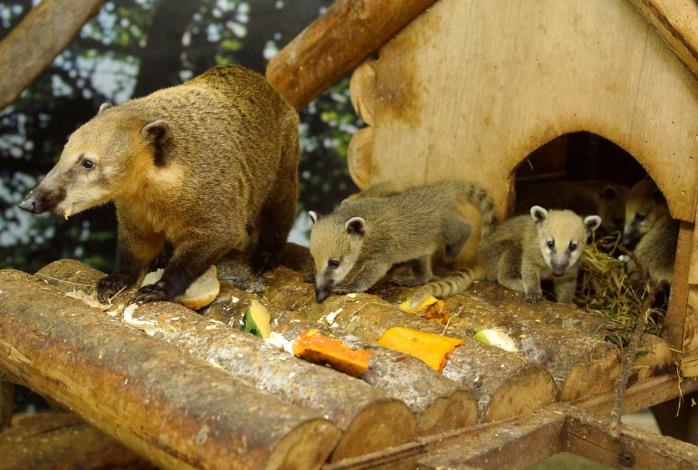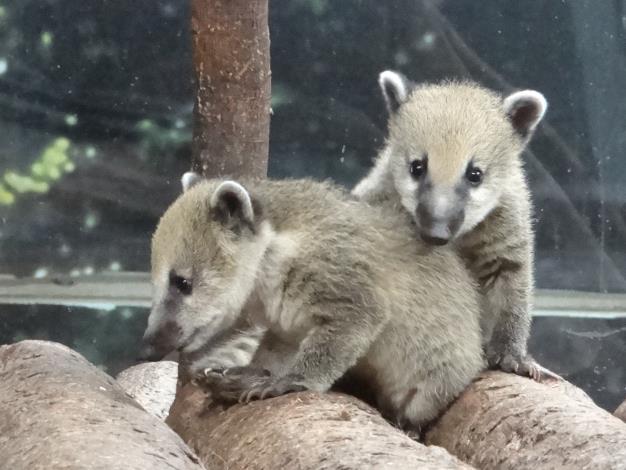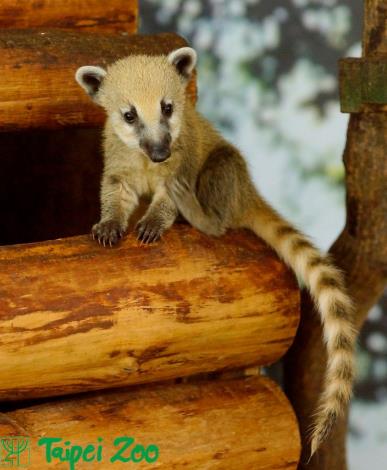Five Newborn South American Coati Babies
Which animal is Taipei Zoo's star of the month? The answer is undoubtedly the South American coatis. Five coati cubs were born on March 23, 2013. The features of these newborn cubs are their pointy elf-like noses and tails with dark brown and yellow stripes. Zoo keepers will be telling stories about the coati cubs at the Children's Zoo (in Chinese). Don’t miss the Keepers' Talk from 10:45 a.m. to 11:00 a.m. on June 2nd, 9th, 16th and 23rd. South American coatis are diurnal animals. They love to swim and play in trees. Their long tails are used for keeping balance while traveling in the woods. They search for animal prey by using their snouts to poke through crevices or by turning over fallen leaves on the ground. Coatis are beneficial, in that larger coatis help to control rodents and insects. Additionally, they can also disperse plant seeds. Furthermore, although coatis are a member of the raccoon family, their appearance is different. Besides, South American coatis do not wash or rub food in water as raccoons do. Everyone is welcome to see the coatis face to face in June, during the Keepers' Talk. Come to the Children's Zoo and meet the lovely coati cubs and their neighbors, the llamas and ponies. Profile
Common name: South American coati
Scientific name: Nasua nasua
Classification: Class Mammalia, Order Carnivora, Family Procyonidae
Conservation status: Protected under CITES Appendix III in Uruguay, but are not classified as threatened in other countries.
Distribution: Coatis are broadly distributed in the tropical regions of South America, from Columbia and Venezuela to Uruguay, northern parts of Argentina and into Ecuador.
Food habits: They are omnivorous and primarily feed on fruit, invertebrates, other small mammals and birds' eggs.
Disposition: Coatis are diurnal animal. They are good at climbing trees and swimming.



![Taiwan.gov.tw [ open a new window]](/images/egov.png)
